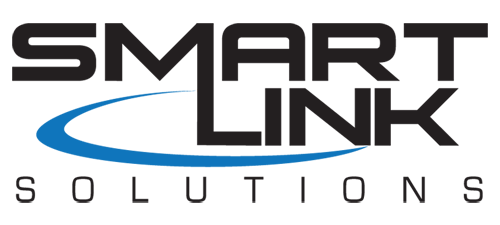
After all, just like a physical store, your website can make a powerful first impression. And maintaining your website ensures that when customers search for the services or products you offer, they find an inviting digital space that encourages them to choose your business over all the others.
What is Website Maintenance (and Why Does It Matter)?
At its core, website maintenance includes all the activities you need to do in order to keep your website running smoothly.
It’s like tending to your garden – nurturing the growth of your business’s online presence and making sure that every element is blooming. In the modern age, where a visitor’s attention span is pretty short, you want to have a website that shines at first sight.
After all, a well-maintained website can attract new visitors while also keeping your existing customers informed and engaged.
Common Misconceptions About Website Maintenance
Before we dig into the pillars of website maintenance, it’s worth addressing some common misconceptions that you’ll want to avoid.
One is the “Just set it and forget it” attitude that once the website is live, your work is done. This couldn’t be further from the truth.
In a constantly evolving digital landscape, your website will quickly become outdated if you don’t keep on top of it. For example, popular search engines like Google favor websites that are regularly updated and provide fresh, pertinent content to users.
Another misconception is that a website’s appearance is really all that matters. And while it’s true that an attractive website can draw people in, it will also be expected to run smoothly. Doesn’t matter how nice a website looks – if it’s glitchy or slow to load, people will stay away.
And then there’s the issue of cost.
Some business owners see website maintenance as an unnecessary expense with little ROI (return on investment). However, the potential cost of not maintaining your website can end up being way higher. A website that’s not regularly updated can be vulnerable to cyber-attacks, data breaches, or the spread of malware.
The First Pillar: Optimization
Our first pillar encompasses a range of tasks focused on making sure that your website is fine-tuned for both peak performance and maximum visibility in search engines.
Here’s several elements to optimize for your website:
Speed and Performance: As we mentioned earlier, people don’t like waiting around for a page to load. The longer it takes, the higher the chances visitors will bounce to another site. Regular speed tests will help identify areas for improvement, ensuring that your website is always running at its best.
Mobile Friendly: With an increasing number of customers accessing websites from mobile devices, mobile optimization has become a high priority. Make sure that your website is responsive, with design and functionality that adapts seamlessly to all kinds of devices and screen sizes.
Link Building: By obtaining high-quality backlinks from reputable sites, you signal to search engines that your content is valuable and trustworthy. Effective link building strategies help increase your website’s visibility on search engines, leading to higher rankings and more organic traffic.
The Second Pillar: Updating Content
Your website’s content is the voice of your brand. It’s how you share your story, keep your customers informed, and stand out from your competitors.
Effective content management involves these key practices:
Regular Blogging: Maintain a blog to share company news, industry insights, and valuable content that resonates with your audience. Consistent blogging provides fresh content that can improve your search engine rankings.
Seasonal Updates: By syncing up your content with the changing seasons, holidays, or local events, you can keep your content fresh and relevant.
Style and Design: If you periodically refresh your website’s design, you can implement the latest user interface (UI) and user experience (UX) best practices, making your website more intuitive and easier to navigate for visitors.
The Third Pillar: Improving Security
Our final pillar of website maintenance, Security, is too often overlooked by local business owners. But neglecting website security can have severe consequences, including data breaches and loss of customer trust.
Here’s some tips to keep your website secure:
Strong Passwords: Encourage your team to use complex, unique passwords, consisting of a mix of uppercase and lowercase letters, numbers, and special characters. This can significantly reduce the risk of security breaches.
Update Software: Regularly updating your website’s software is an easy and effective way to protect against potential security vulnerabilities. Hackers are constantly searching for new ways to exploit outdated software. This makes websites with outdated systems prime targets for attacks. By staying current with your software updates, you’re shutting the door on potential digital intruders.
Security Audits: Performing regular security audits helps identify any existing or potential security threats. This includes checking for malware and making sure your site’s firewall and other security measures are up to date.
Website Maintenance Best Practices
In addition to the three pillars of website maintenance, here are a couple other things that you can do to keep things running smoothly:
Regular Check-Ins: Set aside time each month to review your website, looking for broken links, and outdated or incorrect information.
Back Up Your Website: We can’t stress this enough. Back up often! Frequent backups protect you from data loss. Automatic backups are also a convenient way to be sure that you can quickly restore your site in case of an emergency. In fact, if you’re doing your web hosting through Smart Link Solutions, we offer real-time back ups.
Final Thoughts
Your business’s online presence is a powerful tool that requires ongoing care and attention. By focusing on the three pillars of website maintenance – Optimization, Content Updates, and Security – you can ensure that your website keeps running smoothly and helping your business thrive.
If you’d like to take your business’s website to the next level, contact Smart Link Solutions! We’ll combine your vision with our expertise to craft a website that’s impressive, up-to-date, and well-maintained.
Connect with Smart Link Solutions today and see why our personalized service makes all the difference.




